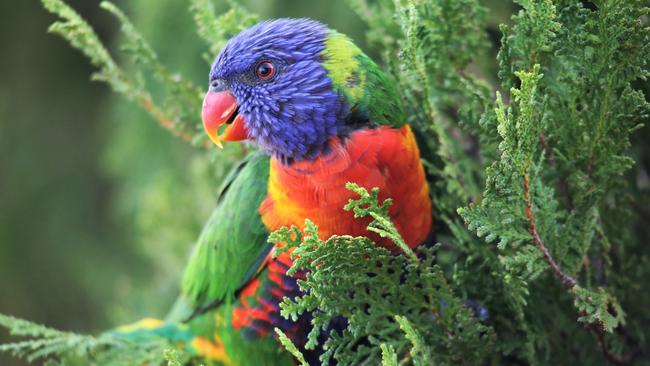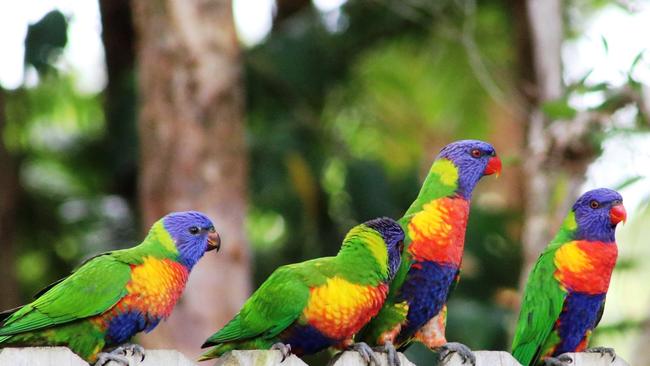Lorikeets in Northern NSW are getting sick; here’s how you can help them
Little has been known about the distressing, debilitating illness but this university research team hopes to make some headway.

Lismore
Don't miss out on the headlines from Lismore. Followed categories will be added to My News.
As a debilitating but mysterious illness continues to impact one of Australia’s beloved native parrots, researchers hope there will be strength in numbers when it comes to gathering new data.
Lorikeet paralysis syndrome affects birds from south of Grafton to north of Bundaberg.
The condition mostly affects rainbow lorikeets, but has also been found in scaly-breasted lorikeets less often.
Researchers from the University of Sydney were working to crack the code on the syndrome, the exact cause of which is not yet known.
Lorikeet paralysis syndrome can cause limb, neck, and tongue paralysis, and an inability to blink or swallow.
Without treatment, it was impossible for the impacted birds to fly or feed.
In a new study, researchers honed in on more details about the illness, which was found in 28 per cent of the 4035 rainbow lorikeets admitted to RSPCA care in 2017 and 2018.

They have ruled out an infectious diseases like a virus, and believe a toxin – possibly from a plant the lorikeets are feeding on – as the most likely cause.
University of Sydney School of Veterinary Science Professor David Phalen, a co-author of the study, said because the syndrome was seasonal, occurring between October and June, they want to track blossoming, fruiting and feeding patterns.
This was where residents come in.
The research team was seeking the help of “citizen scientists” to help gather data about what local lorikeets are feeding on.
“We’re trying to find people to help find the plants they might be eating that might be causing this,” Prof Phalen said.
When participants see a rainbow lorikeet feeding, they can upload a photo of the plant or tree to the study’s iNaturalist page.

Prof Phalen said researchers hoped to compare what the birds are eating when they’re not sick, and the plants they feed from when the disease was rampant.
“We’re hoping this study might last a year or at least until the end of summer,” he said.
“Then we’ll have what they’re eating now and we’ll know that they’re eating when the paralysis starts.”
He said being able to engage members of the public to help gather data in this way was “an incredibly powerful tool”.
“Trying to do this on our own would be very difficult,” he said.
“That’s the wonderful thing about citizen scientists … that the citizens of this area can go out and make a big difference.”

Prof Phalen said the severity of the illness on the Northern Rivers varies from year to year.
He said “large numbers” were recorded by Grafton’s vet hospital two years ago and the region’s WIRES co-ordinator has reported seeing the syndrome every year.
“It’s our impression that the numbers coming into care are getting more and more,” he said.
“It’s also our impression that some seasons, especially in northern New South Wales, are worse than others.”
The lorikeets have reasonable survival prospects if treated early.
“We can have birds that are still able to stand up, feed themselves,” he said.
Others, he said, can be so paralysed they can’t blink or swallow.
These symptoms also leave the birds more vulnerable to predation.
Prof Phalen said researchers suspect the plant they’re looking for would not be native to Australia and would grow mostly in the area where the syndrome appears.
To help support the study, visit The University of Sydney’s Lorikeet Paralysis Syndrome Project page and report sightings of lorikeet feeding plants via the study’s iNaturalist page.


